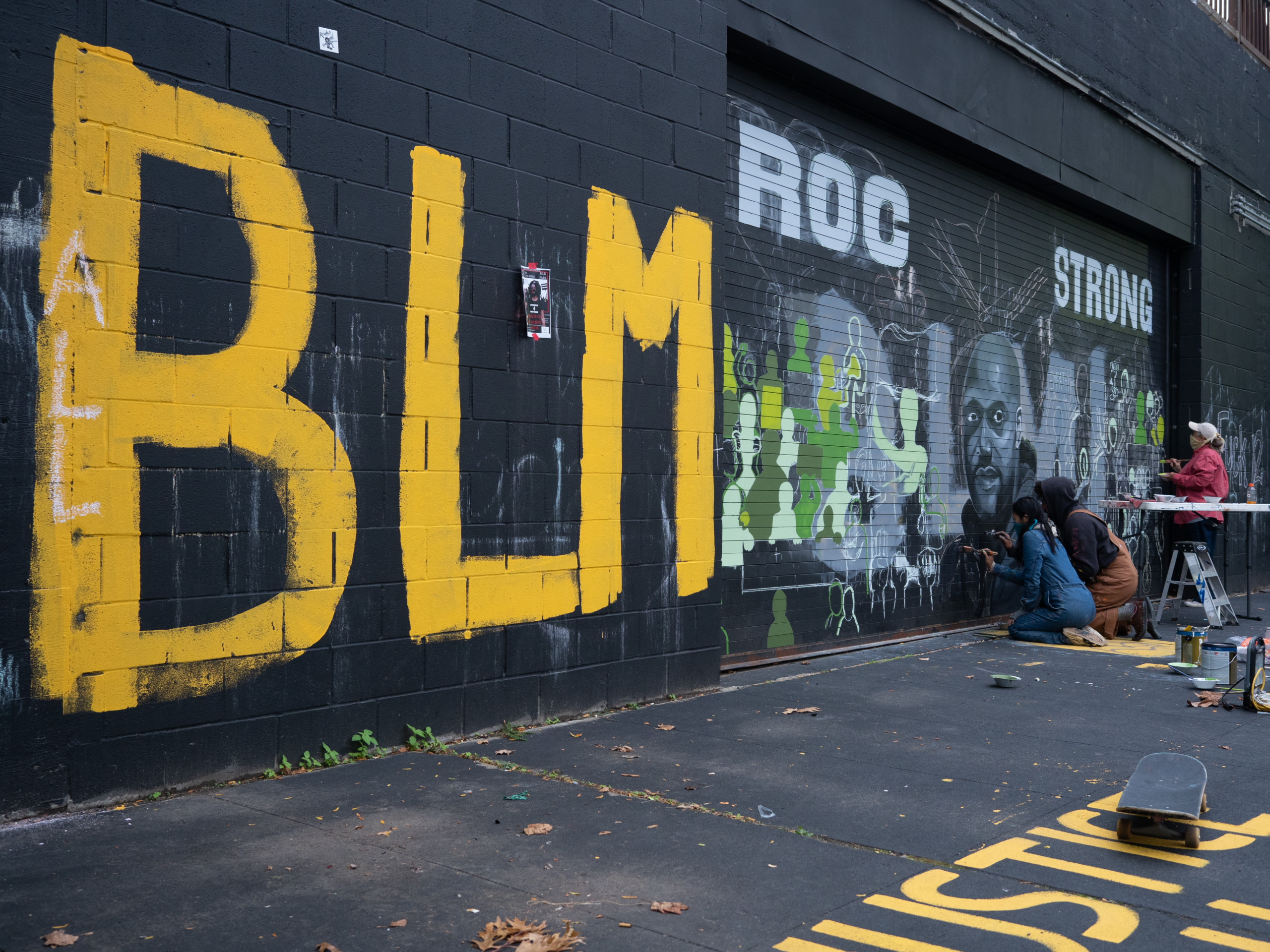It was a brisk fall evening in Manhattan Square Park. As a slight breeze blew across the city center, a group of teens practiced for a fashion show taking place there the next day. Chalk was scattered across the park on the walls and in buckets; everywhere you looked, people were turning passion into action. Amongst the traffic of skateboarders, BMX bikers, and children playing basketball, Alexa Guzon set up a stage at one end of the fountain.
Ready to take that stage was the Rochester Street Orchestra, a group of current and former students at UR’s Eastman School of Music. They perform music by composers of color at various protest events around the city. Today, the RSO consists of a viola, a violin, a cello, and a bass. During their performance at Manhattan Square Park, their music was accompanied by winter hats, puffy coats, and white knuckles. As a result of the cold, the music wasn’t perfect, but the passion of the group was palpable through their energy on stage and willingness to show up.
After a few songs, the group took their bows and headed offstage to the COVID-19 testing booth.
“Music is so universal; it’s like the one thing that I think will bring everyone together,” senior Samantha Donato, a classical double bass player, said. “As student musicians, this is the one way we can give back a little bit more.”
The group has no qualms about their decision to exclusively play music by composers of color, saying that “it felt weird to be playing music by anyone else.” The RSO as a whole is much bigger than the group at Memorial Park that day: they are a coalition of both active Eastman students and alumni brought together by their love for music and their desire to create change. They only wish that they saw more UR students out at protests to do their part. One UR student noted, “It’s important to not just be here for our ‘four-year vacation’ but [to] contribute to the place you are living as well.”
The group that invited the RSO today is Alexa Guzman’s Project AIR. Project AIR aims to utilize a transformative form of nonviolent resistance known as protest art.
Protest art is not a 21st century invention. Picasso painted “Guernica” in 1937 in response to the firebombing of the town of the same name.
“Protest art itself doesn’t create change, but it aims to embolden and galvanize enough people across socio-economic backgrounds to mobilize for a cause,” graphic designer Deva Pardue said. “[The raised fist of the BLM movement] symbolizes perfectly that the people are mad as hell and the world’s going to hear about it.”
If you were at Memorial Park on Oct. 8, you would have heard about it. Guzman and the team who ran the Hoop Bus have organised the show here, but it is the community, from all walks of life, who create the art taking place. Guzman herself has created many pieces seen around protests in Rochester, from the banner of demands held in front of City Hall, to the wanted posters for Troy Talladya, Francisco Santiago, and Mark Vaughn — the officers who committed the homicide of Daniel Prude. However, calling Guzman an artist would be a disservice to how much more she is and does.
Project AIR aims to use art to empower change. Guzman wants people to do more than “fight the man.” She wants people to improve themselves. She wants to provide space for people to express themselves through art, and protest by focusing their energy inwards as well as out.
As Guzman says, “art is a universal language.” She hoped that when she provided an opportunity for artists to come out and perform, it would carry its message further and to more people; after all, “we are all able to look at the same painting and understand the message that it’s trying to send out there.”
Her words are especially fitting in the context of the massive mural painted by a small group of people over the course of the event. Depicted on it was Daniel Prude, looking out protectively over the small crowd of people milling about the fountain.
People who shuffled out into the bitter cold in droves were warmed by glowing heat poles, or the movement of dance. People took free COVID-19 tests provided by Curative. Gloved and masked volunteers handed out free food, and children, teens and adults bounced balls off the backboard mounted to the Hoop Bus.
Guzman has been fighting since the beginning of the protests in Rochester and hasn’t stopped fighting since. On Sept. 3, Alexa brought posters with Daniel Prude’s face on them. She was given a chance to speak that night, and she took that time to address viewers of the protest.
Her passion has inspired many to come out and aid in her mission. Among them are the youth organizers, and the basketball enthusiasts from the Hoop Bus. And she hopes to inspire more people going forward.
With the city of Rochester facing rising internal tension from police-related violence and corruption in city government, Project AIR fills an easily overlooked role in the environment of a protest. People need a place to recover, thrive and be safe. Alexa Guzman wants to provide that.
Photo editor Henry Litsky contributed to the reporting for this article.



